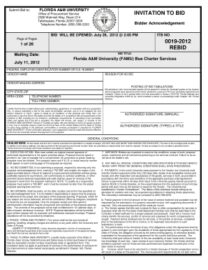
A company’s comprehensive income, or CI, is an amount that indicates the sum of its net income and other comprehensive income. In addition, it measures non-owner changes in a company’s net assets over a given period or the total non-owner changes in equity. Accumulated other comprehensive income (AOCI) instead appears on the balance sheet as part of owners’ equity.

This means that, even though companies may have zero regular taxable income and zero regular tax, they may have an AMT liability. They must also consider that the AMT NOL may be different from the regular tax NOL. Even though the rules are fairly straightforward, hanging credits that get missed are still a leading cause of financial statement restatements. Well it is correct, but it doesn’t reflect what the stock is actually worth. The company might have paid $10 for the stock and now it’s worth $100 making the balance sheet misleading as to the true value of the company’s assets.
Comprehensive Income
It is similar to the amount of retained earnings which is the net cumulative amount of the items reported on each period’s income statement. In regards to taxes, it is permitted to report other comprehensive income after taxes, or one can report before taxes as long as a single income tax expense line item is included at the end of the statement. Topic 740 provides specific guidance on what items to consider in the assessment of realization of deferred tax assets. One consideration is the existence of future reversals of existing deferred tax liabilities. Generally, a valuation allowance may not be needed if, after considering other evidence, sufficient deferred tax liabilities will reverse to produce taxable income in the future. The net income is transferred down to the CI statement and adjusted for the non-owner transactions we listed above to compute the total CI for the period.

CI is a technique of providing more information to firm stakeholders about the overall financial prospects of their investment. Once you have viewed this piece of content, to ensure you can access the content most relevant to you, please confirm your territory. These materials were downloaded from PwC’s Viewpoint (viewpoint.pwc.com) under license. For instance, suppose a company has a portfolio of bonds and the value of those debt securities has changed.
Other Comprehensive Income (OCI)
The Financial Accounting Standards Board (FASB) has continued to emphasize a financial measure called other comprehensive income (OCI) as a valuable financial analysis tool. When an asset has been sold, and therefore there will no longer be a fluctuation in its value, the realized gain or loss from the sale must be transferred from the balance sheet to the income statement. Whenever CI is listed on the balance sheet, the statement of comprehensive income must be included in the general purpose financial statements to give external users details about how CI is computed.
These often have different carryforward periods than federal items, and the statute can change from year to year. Companies should remove expired carryforwards and properly record expiration dates. Reversals of deferred tax liabilities that relate to indefinite-lived intangible assets, often referred to as “naked credits” or “hanging credits,” generally may not be used in realizing deferred tax assets.
OCI is intended to provide the reader of a company’s financial statements with a more comprehensive view of the entity’s economic situation. OCI includes revenues, expenses, gains, and losses that have not yet been realized. When an underlying transaction, such as the sale of an investment, is completed, profit/loss is realized.
Other Comprehensive Income (OCI) refers to any revenues, expenses, and gains / (losses) that not have yet been realized. These items, such as a company’s unrealized gains on its investments, are not recognized on the income statement and do not impact net income. In addition to investment and pension plan gains and losses, OCI includes hedging transactions a company performs to limit losses.
Pension Plans
A company’s income statement details revenues and expenses, including taxes and interest. The line items included in this section of the financial statements are unlikely to be understood by a non-accountant. Because net income relates to a company’s entire sales revenue, other comprehensive income does not qualify as net income because it contains profits and losses not realized by the company. Understanding and analyzing OCI greatly improve financial analysis, especially for financial companies. In an ideal world, there would only be comprehensive income as it includes standard net income and OCI, but the reality is that astute analysts can combine both statements in their own financial models. Although tax professionals may already be familiar with these items, this article’s goal is to remind companies about reporting requirements that may have fallen off their radar screen.
This includes foreign currency exchange hedges that aim to reduce the risk of currency fluctuations. A multinational company that must deal with different currencies may require a company to hedge against currency fluctuations, and the unrealized gains and losses for those holdings are posted to OCI. Contrary to net income, other comprehensive income is income (gains and losses) not yet realized.
What is Other Comprehensive Income?
Accumulated other comprehensive income is a subsection in equity where “other comprehensive income” is accumulated (summed or “aggregated”). It is possible to list a variety of earnings and losses in the Accumulated Other Comprehensive Income account. When the primary purpose of OCI is to serve as an accounting “bridging mechanism,” it deals with measurement challenges and contributes to stakeholders taking the OCI statement into account.
MetLife Non-GAAP EPS of $1.94 beats by $0.06, revenue of $16.62 … – Seeking Alpha
MetLife Non-GAAP EPS of $1.94 beats by $0.06, revenue of $16.62 ….
Posted: Wed, 02 Aug 2023 20:21:37 GMT [source]
Some examples of other comprehensive income are foreign currency hedge gains and losses, cash flow hedge gains and losses, and unrealized gains and losses for securities that are available for sale. OCI, or accumulated other comprehensive income, is a financial analytical technique that refers to predicted gains or losses on a company’s or individual’s balance sheet. These profits and losses impact a company’s net income, although they are often not reported on an income statement. Once the hrc launches 2018 corporate equality index report transaction has been realized (e.g., the company’s investments have been sold), it must be removed from the company’s balance sheet and recognized as a realized gain/loss on the income statement. According to accounting standards, other comprehensive income cannot be reported as part of a company’s net income and cannot be included in its income statement. Instead, the figures are reported as accumulated other comprehensive income under shareholders’ equity on the company’s balance sheet.
State Corporate Income Tax Rates and Brackets for 2023
Ultimately, it looks at possible future income statement items, decreasing the chance of significant profits/losses surprising stakeholders. Gains and losses on specific investment categories, pension schemes, and hedging trades can all be considered other comprehensive income. However, because the profits and losses have not yet been realized, they are excluded from net income. The ruling made AOCI accounts mandatory for all publicly-traded companies in the US.
Broadstone Net Lease Announces Second Quarter 2023 Results – Business Wire
Broadstone Net Lease Announces Second Quarter 2023 Results.
Posted: Wed, 02 Aug 2023 20:10:00 GMT [source]
While the income statement remains a primary indicator of the company’s profitability, other comprehensive income improves the reliability and transparency of financial reporting. It is commonly referred to as “OCI” although the word comprehensive has no meaning as can be seen from the definitory equation. OCI when translated into another language and back into English means “other income” only. A multinational business that deals with various currencies may be required to hedge against currency swings; the unrealized gains and losses for those holdings are then reported to OCI. As a result, when a gain or loss is realized, the corresponding amount is effectively transferred from the accumulated other comprehensive income account to the retained earnings account.
The gain or loss has not been realized yet, so there will be no income statement or net income impact. Topic 740 generally requires entities to record a deferred tax liability for the excess amount of the difference between the investment in a foreign subsidiary’s tax basis and book basis. However, under APB Opinion No. 23, entities do not have to record a deferred tax liability if they can assert that the basis difference will not reverse in the foreseeable future. Companies should ensure the specific plans for reinvestment are well-documented and revisited annually.
Get instant access to video lessons taught by experienced investment bankers. Learn financial statement modeling, DCF, M&A, LBO, Comps and Excel shortcuts. Under the AMT system, companies may only offset their AMT liability with 90% of their AMT NOL.
- The statement of comprehensive income is not required if a company does not meet the criteria to classify income as comprehensive income.
- The statement of comprehensive income displays both net income details and other comprehensive income details.
- My Accounting Course is a world-class educational resource developed by experts to simplify accounting, finance, & investment analysis topics, so students and professionals can learn and propel their careers.
- Other comprehensive income is not listed with net income, instead, it appears listed in its own section, separate from the regular income statement and often presented immediately below it.
This content is for general information purposes only, and should not be used as a substitute for consultation with professional advisors. Two such measurements are comprehensive income and other comprehensive income. Though they sound similar, there are certain differences, primarily in the level of detail they provide into a company’s financial situation. The intraperiod allocation rules can get quite complex and yield some very nonintuitive results.
